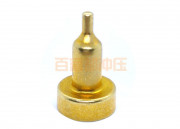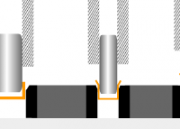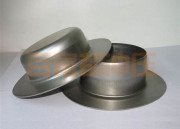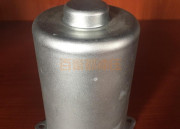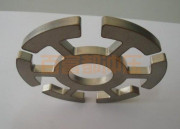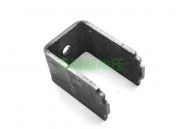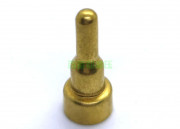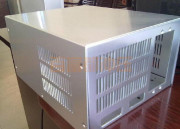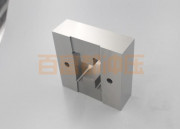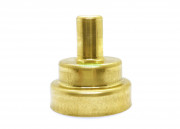Posted at 04/08/2022 , By deep drawing , Categories Blog,Industry , Comment Comments Off on Drawing parts processing standards and process precautions 1. Processing standard of drawing parts
Stretching parts are workpieces obtained by stretching and deforming the sheet by mechanical equipment. Now Xiaobian will introduce the production standards of our stretching parts for you.
1. The first-wall surface, bottom surface and wall surface of the deep-drawing part, and the corner radius of the four corners of the rectangular part should be appropriate. mm2rd1, mm5.1r2d.
2. The shape of the stretched part should be simple and symmetrical, and it should be stretched at one time as much as possible.
3. For parts that need to be stretched many times, on the premise of ensuring the required surface quality, traces that may be produced on the inner and outer surfaces should be allowed.
4. On the premise of ensuring the assembly requirements, the side wall of the deep drawing part should be allowed to have a certain slope.
5. The dimensions of the deep-drawn parts should be marked with their outer or inner dimensions, and the inner and outer dimensions should not be marked at the same time. With trapezoidal deep-drawing parts, the dimension in the height direction should generally be based on the bottom. If the upper part is the benchmark, the height dimension is not easy to guarantee.
6. The distance from the hole on the bottom or flange of the deep drawing piece to the side wall should be appropriate.
2. Precautions when using tensile parts
As we all know, tensile parts are prone to residual stress during machining, and there is a high residual stress near the yield limit. Most residual stresses have significant adverse effects on components, such as reducing their actual strength, fatigue limit, stress corrosion and brittle fracture. Due to the relaxation of residual stress, the parts are warped, which greatly affects the dimensional accuracy of the parts. So, what should we pay attention to when working with extruded parts? Let our stretched parts manufacturers explain it to you.
1. Regularly check the turntable and die mounting seat of the punch press to ensure the coaxial accuracy of the upper and lower turntables.
2. Before using stretch metal stamping parts, it is necessary to strictly inspect, clean up dirt, and carefully check that the guide sleeve and mold of stretch stamping parts are well lubricated.
3. In order to ensure the service life of the drawing and punching parts, the die spring should be replaced regularly to prevent the spring from fatigue damage and affect the use of the drawing and punching parts.
4. When installing the mold, the puncher should use softer metals (such as copper, aluminum, etc.) to make operating tools to prevent damage to the drawing punch during the installation process.
5. When the punch and die edge of the pulling and pressing part are worn, they should be stopped immediately and ground in time, otherwise the wear degree of the die edge will be rapidly expanded, the die wear will be accelerated, and the quality of the stamping parts and the life of the die will be reduced.
6. According to the installation procedure of the mold, install the convex and concave mold on the turntable to ensure that the direction of the convex and concave stretched stamping parts is consistent, especially the direction requirements (non-circular and square), to prevent installation errors and reverse installation.
3. Precautions and uses for the processing process of drawing parts
Have you ever wanted to ask how much you know about the accessory product of tensile parts? I am afraid that few people know what this accessory is used for and how it is processed. This kind of drawing part is a shaped slab or hollow part drawn to make various open stamping parts. This kind of workpiece often appears in our daily life, but we have not really understood the purpose and function of the product. Next, we will introduce you to the production process considerations and performance aspects of stretched parts.
Due to the special production process of wire drawing, this production method can be made into thin-walled parts with complex shapes such as cylinder, box and spherical. Rally has its unique production method in tractors, electrical appliances, electronics and other industrial and daily necessities, so it has a considerable position. If the drawing parts are used as installation and processing items, if there is any missing or missing, it will cause the valve to lose control and damage the piston and other workpieces, and if it is used in the case of missing installation, it will cause serious failure, which is also a detail to pay attention to. question.
Unturned tire casings stacked for a long time will be deformed by squeezing. If a squeeze condition occurs, the filtering effect is not reliable. Therefore, we need to pay attention to all aspects of our workflow and daily routines so that the stretched products we produce are fully functional.
The above is the processing standard and process description of drawing parts. Everyone should know about it. Therefore, the manufacturer of tensile parts reminds you that only the correct treatment of tensile products can play an important role in its performance. In addition, the service life is also highly ductile. I hope the above will be helpful to readers.
Read More →

